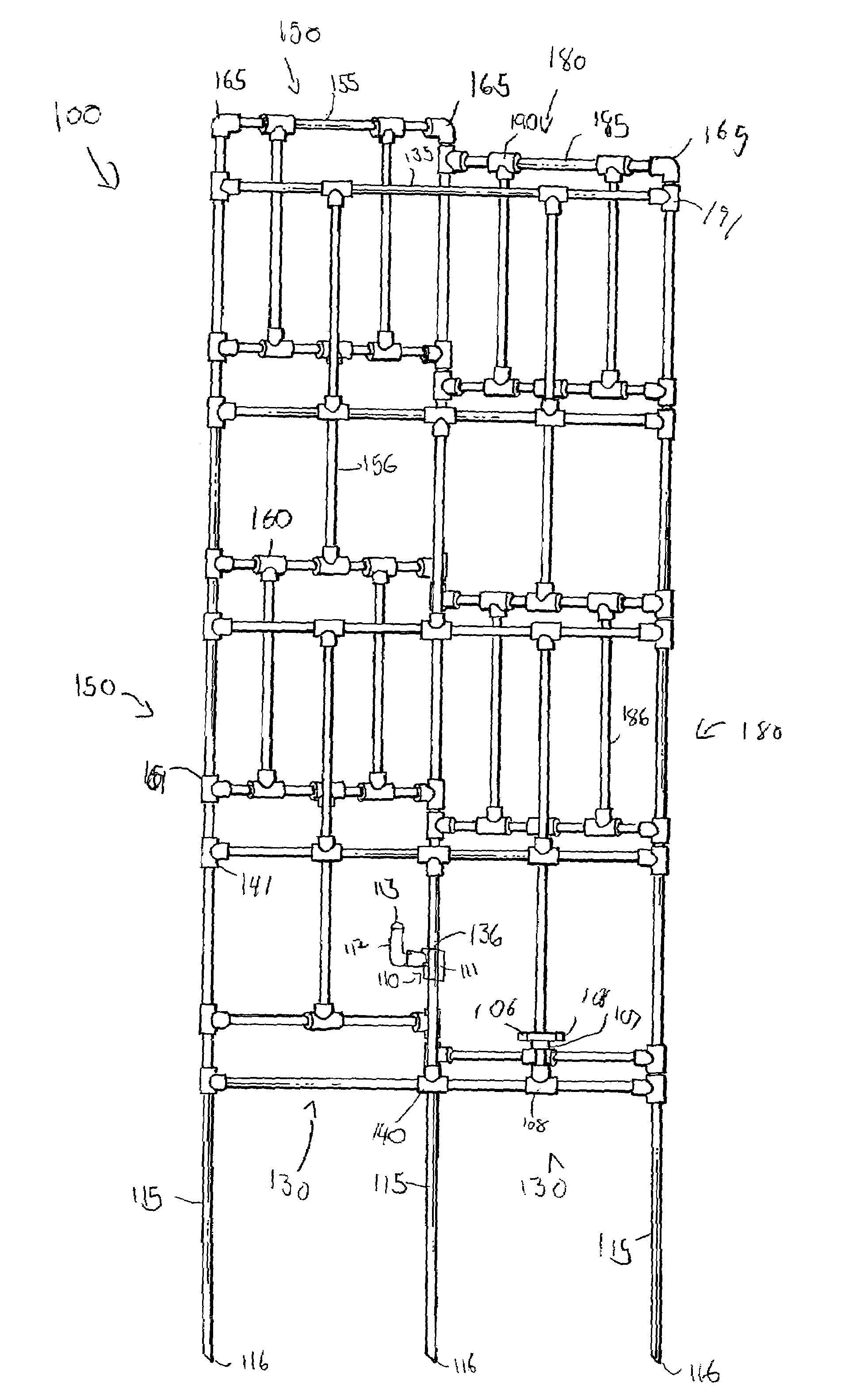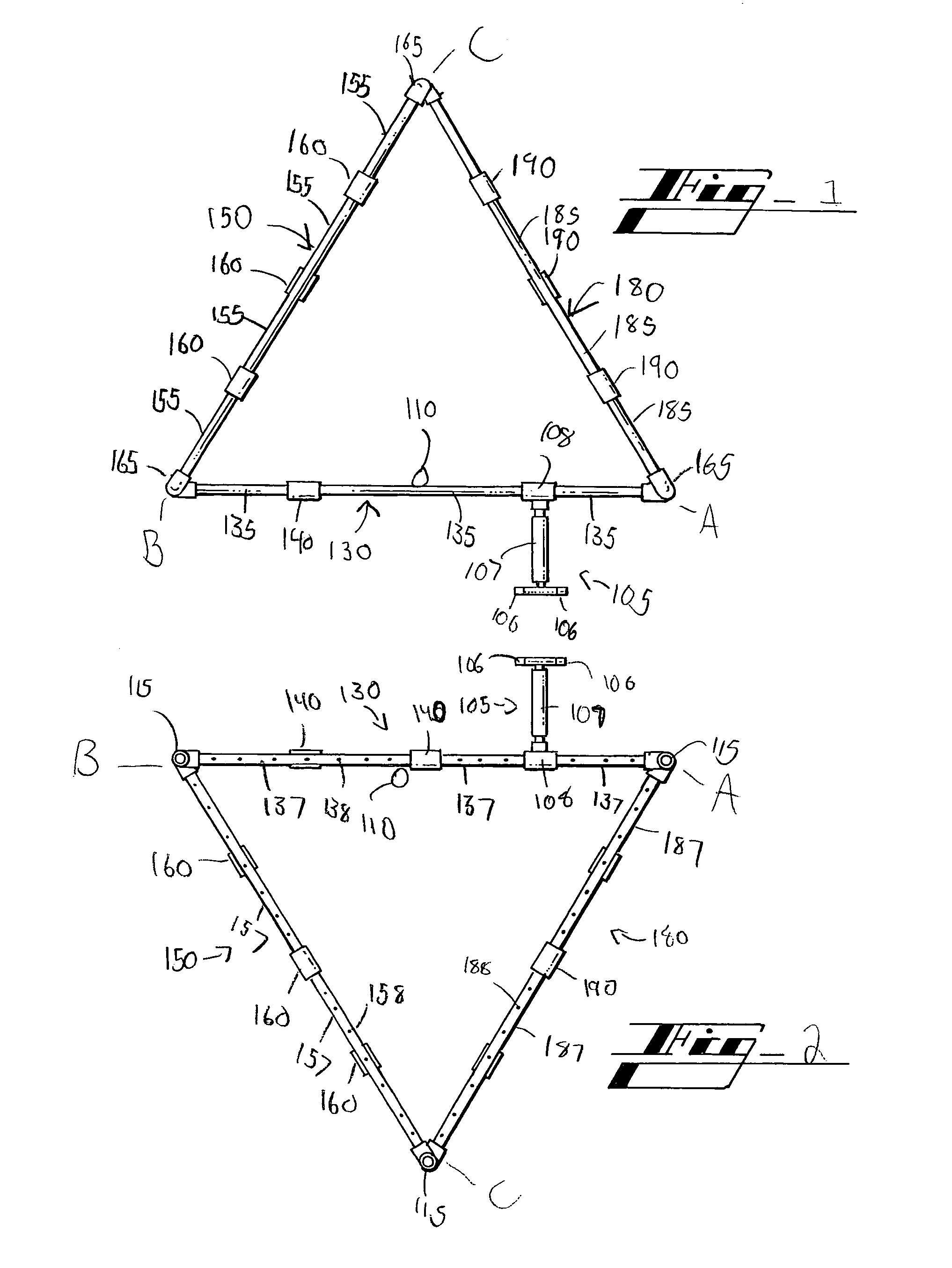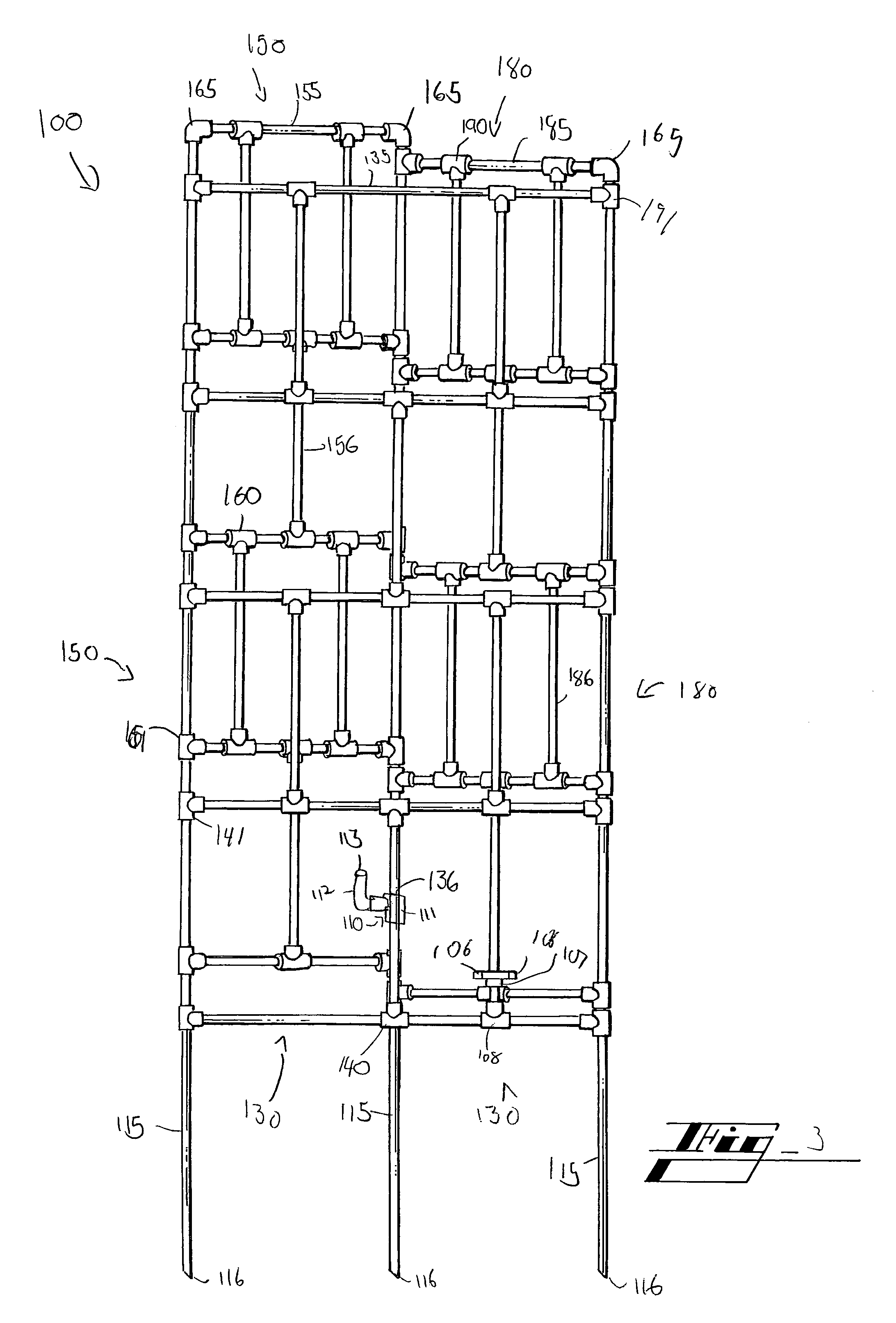Gardening cage apparatus and system
a cage and cage technology, applied in the field of produce gardening, can solve the problems of disease and insect infestation, present cages typically require significant tying and staking, and most tomato cages provide inadequate support for plants, and achieve the effect of preventing puddling and water run-off, and good absorption into soil and roots
- Summary
- Abstract
- Description
- Claims
- Application Information
AI Technical Summary
Benefits of technology
Problems solved by technology
Method used
Image
Examples
Embodiment Construction
[0041]Referring to the drawings wherein like reference numerals designate corresponding parts throughout the several figures, reference is made first to FIG. 1 that illustrates a top view of an embodiment of a gardening cage 100. The cage 100 typically includes several panels arranged geometrically. In a typical embodiment, three panels 130, 150, 180 are arranged in a triangular orientation, generally defining three corners A, B, C of the cage 100. The triangular orientation of the panels 130, 150, 180 offers several advantages. One such advantage is that vine growing plants such as tomatoes, which normally tend to grow outward, now grows inward on itself, which encourages vines to buttress and reinforce each other. In addition, by growing inwards, the vines tend to grow through the panels and on through the rungs (see below), thereby obviating the need for staking and tying. The panels 130, 150, 180 include a plurality of horizontal rungs 135, 155, 185 and connectors 140, 160, 190 ...
PUM
 Login to View More
Login to View More Abstract
Description
Claims
Application Information
 Login to View More
Login to View More - R&D
- Intellectual Property
- Life Sciences
- Materials
- Tech Scout
- Unparalleled Data Quality
- Higher Quality Content
- 60% Fewer Hallucinations
Browse by: Latest US Patents, China's latest patents, Technical Efficacy Thesaurus, Application Domain, Technology Topic, Popular Technical Reports.
© 2025 PatSnap. All rights reserved.Legal|Privacy policy|Modern Slavery Act Transparency Statement|Sitemap|About US| Contact US: help@patsnap.com



